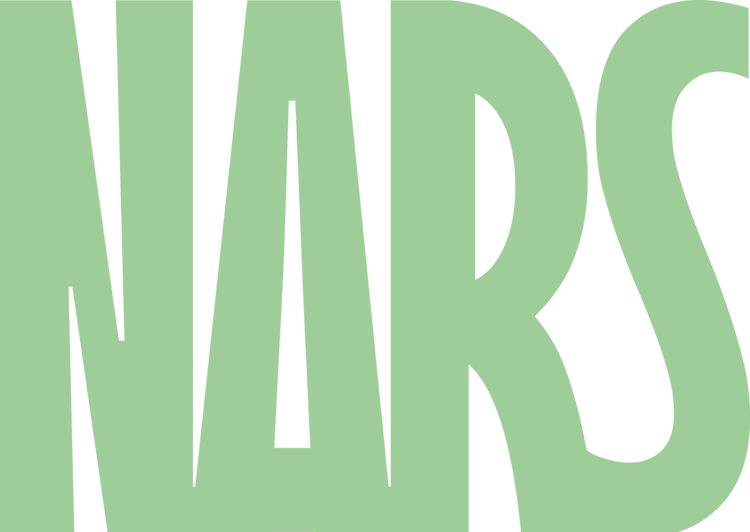RESIDENCY FELLOWSHIP
Starting in 2023, one US based applicant per season of the International Residency will be awarded a Full Fellowship, which covers all program fees for the season. A jury consisting of NARS staff and select art professionals review applications on the merit of artistic quality and level of need; studio practice; and the potential professional development and benefit from engaging with the NARS community. Only US based artists are eligible to receive the Full Fellowship.
Click here to learn more about the International Residency Program, and how to apply.
Meet the Season II 2024 International Residency Fellow
Basharat Ali Syed's practice explores the collective catharsis inherent to post-colonial identity and examines the regressive dichotomy of ontological existence within a cross-border conflict nation. The work assembles to interrogate the variance of colonial legacies of structural violence and dispossession. The encounter with political displacement has disrupted conventional notions of belonging, compelling the cultivation of a sense of home in places that were never inherently home. His practice explores the remnants of memory in cultures of oppression while evoking ironic hybridity between reverence and violence.
We sat down with Ali to talk about his experience as a Fellow at the International Residency:
Can you tell us a little about yourself and your practice?
My name is Ali, and I'm a New York-based artist. I was born and raised in Srinagar, Kashmir. My work focuses on exploring the catharsis of post-colonial identity and investigates the discordant nature of existence experienced in conflict regions. I utilize 3D-printed objects, machine outputs, and imaging technologies in my practice to analyze the complex narratives surrounding displacement, the delineation of borders, and mystical connections through poetic introspection. The essential tenet of my practice underlies the fundamental proposition of the generational identity and the predicament that is forged by the traces of hybridity. My hybridity comes from the contradictions of existence within a militarized border nation where civilization's conscious discernment is split between the echoes of colonial violence and the remnants of Indigenous inheritance.
Territory of Desire-I, 2022, Acrylic glass and cashmere scarf and light, Window: 15 x 23 5/8 in, Shelf: 11.5 x 20 in
Image courtesy of the artist
What was a moment at NARS that stood out to you?
The program's layout and organization are highly efficient. It facilitated continuous interactionwith people from diverse backgrounds, which was a valuable experience. Working and collaborating with a cohort who brought varied experiences to the program was enriching. Moreover, discussing my work with visitors in the studio was a definite highlight. It enabled me to shape my studio practice in a way that embraced a community environment, allowing my work to evolve through diverse perspectives and skills shared, contributing significantly to the discussion of socio-political complexities that extend beyond geographical boundaries.
View from Ali’s studio at NARS
How do you feel that the residency program and particularly the fellowship influenced your practice? How would you remember your season at NARS moving forward as an artist?
Participating in the residency program granted me the opportunity to be part of a deeply engaging and supportive community. I enjoyed our weekly meetings and group tours as they broadened my creative boundaries. The program provided with an extensive exposure to the city's galleries, foundations, and museums, enriching my overall experience. The fellowship was crucial for my participation in the program. It allowed me to have a studio space without facing any financial limitations which is very rare in New York City. I'm truly grateful for this opportunity, and I'll always remember it as a pivotal moment for my artistic journey.
Photo courtesy of the artist
Are there certain routines that you developed over your time at NARS? In the studio, or in the neighborhood, for example?
It seems like pulling an all-nighter has become a bit of a tradition for me in all the studios I've worked in. It's almost like a running joke that my work isn't complete without it. However, I've tried to establish a routine that allows me to be productive in the studio even when I'm not actively creating. I've spent a significant amount of time researching materials, schematics, and working on Arduino exercises for my projects.
Tell us more about your piece, Susceptible Fragility II displayed at the International Residency Exhibition Growing. What was it like working on it in the studio, and how did you and the curatorial fellow connect the piece to the theme?
Susceptible Fragility, is an ongoing project that examines how colonial legacies persistently reassert themselves, normalizing their presence as artifacts of conflict and embedding within the intricate hierarchy of culture. The repetitive and shifting movement of the Cashmere fabric symbolizes distorted memories that confront this misalignment. The work views the reconciliation with these legacies as a Sisyphean task, reflecting the unending cycle of history and the persistent wounds of post-colonial scarring inundate these memories, dispossessing any sense of belonging. What remains are remnants of territories caught in a perpetual struggle, trapped between opposing sides and forced into a continuous contradiction.
When shuang (2024 NARS Curatorial Fellow) fellow first came to my studio, I only had a drawing to show. I think we both connected with the idea of resilience, how we persist and thrive despite the challenges we face. We adapt to the decisions we make, and you can see that in the work as the fabric slowly frays, distorts, and gets tangled in the barbed wire, yet it continues to push through a cycle of resemblance.
Would you like to share anything with the incoming residency fellows?
My only advice would be to take advantage of what the program has to offer. This is a great way to make connections, be part of a community, and have access to places that are usually limited.
Susceptibly Fragility II, 2024, Stainless steel, aluminium wire, PLA plastic, concrete, fan and cashmere fabric, 40 x 40 x 80 in
The Residency Fellowship programs are made possible by





